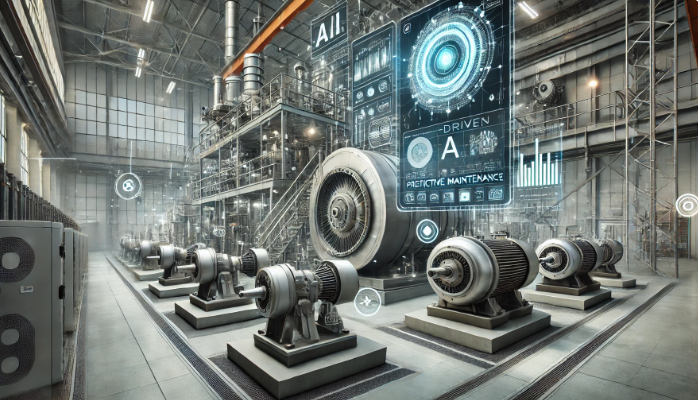
Problem: On most industrial sites, such as power plants or factories, rotating machinery exists in various forms, such as turbines, pumps, motors, compressors, and blowers, and is used as primary equipment. In general, a rotating machine is one that rotates around a rotational axis due to the force from a power source. Given that rotating equipment plays a key role in industrial facilities, failures or anomalies in the equipment's operation can lead to delays and downtimes in production, which in turn leads to losses and time costs.
Objective: Develop AI-based forecasting system to predict the operating conditions of rotating equipment, allowing for the optimization and automation of the maintenance process in the dynamic environment of industrial sites.
Proposal: Data is collected from specialized vibration measurement sensors. These sensors are widely used in various manufacturing sectors where it is necessary to continuously measure the vibrations of electric motors or servomotors. Data was collected under several vibration conditions:
The data includes variables related to the equipment's condition during normal operation, vibrations due to imbalance, vibrations from a loose bolt connection, and the timestamp of the data collection. Data is collected multiple times per second, allowing even the slightest changes in equipment operation to be observed.
Solution: We trained several machine learning models, including neural networks. We were able to train a model that provides 95% accuracy in predicting the operation of rotating equipment.
Objective: Develop AI-based forecasting system to predict the operating conditions of rotating equipment, allowing for the optimization and automation of the maintenance process in the dynamic environment of industrial sites.
Proposal: Data is collected from specialized vibration measurement sensors. These sensors are widely used in various manufacturing sectors where it is necessary to continuously measure the vibrations of electric motors or servomotors. Data was collected under several vibration conditions:
- Under normal operation
- Under vibration caused by imbalance in the equipment
- Under vibration caused by a loosened bolt connection
The data includes variables related to the equipment's condition during normal operation, vibrations due to imbalance, vibrations from a loose bolt connection, and the timestamp of the data collection. Data is collected multiple times per second, allowing even the slightest changes in equipment operation to be observed.
Solution: We trained several machine learning models, including neural networks. We were able to train a model that provides 95% accuracy in predicting the operation of rotating equipment.
- Our model is capable of predicting the state of rotating equipment with 95% accuracy based on data obtained from sensors. This means that by receiving data about the operation and vibration of rotating equipment, our model can successfully classify the equipment's state and predict:
- Whether the equipment is operating normally
- Whether it is vibrating abnormally due to instability in the rotating disc
- Whether it is vibrating abnormally due to loosened fastenings
- Our model can play a significant role in optimizing and automating the maintenance of rotating equipment, minimizing downtime in production and thereby eliminating losses and time costs.
